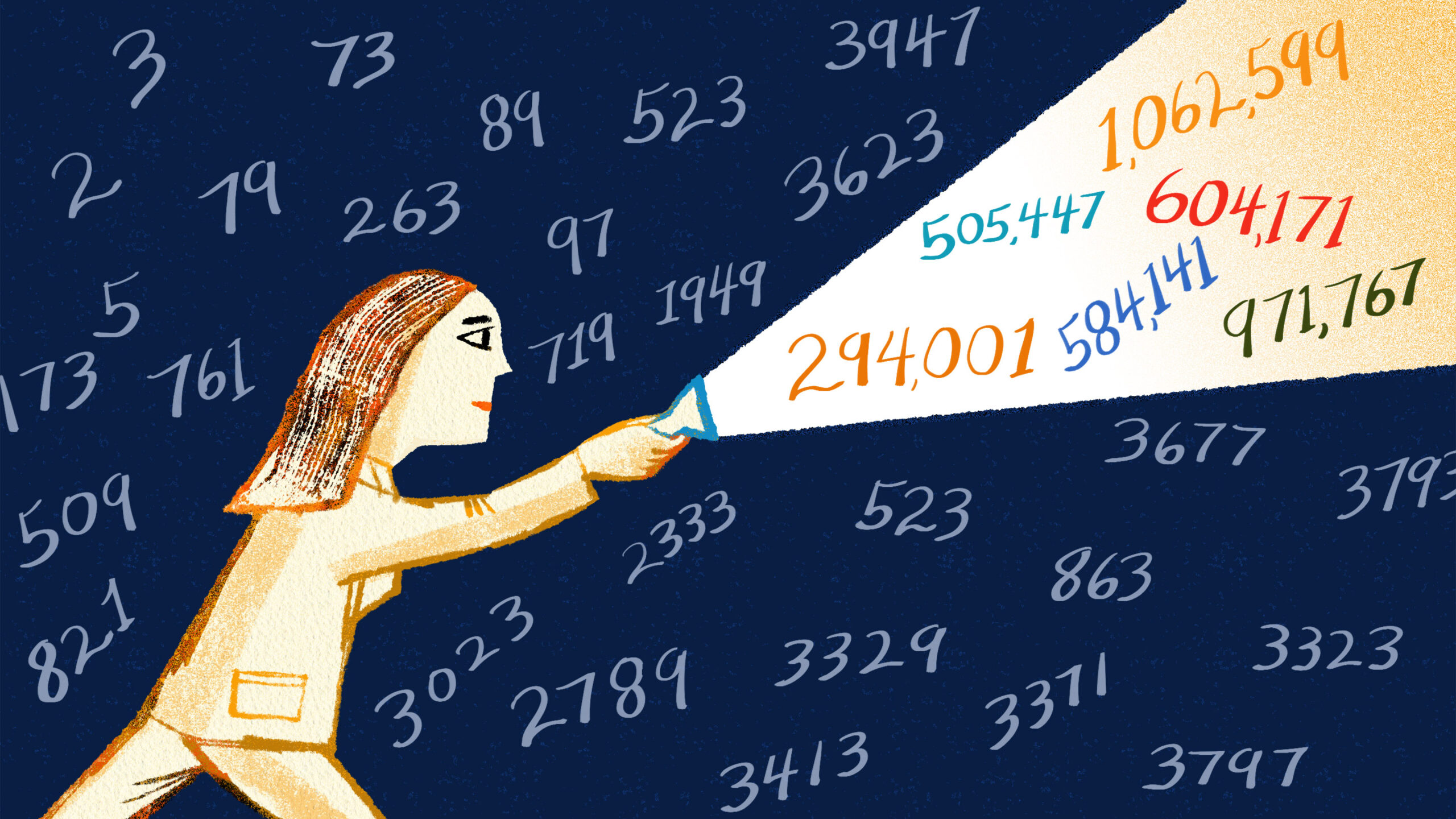
by Patrick Honner
Contributing Columnist, Quanta Magazine
July 21, 2022
If you’ve been following the math news this month, you know that the 35-year-old number theorist James Maynard won a Fields Medal — the highest honor for a mathematician. Maynard likes math questions that “are simple enough to explain to a high school student but hard enough to stump mathematicians for centuries,” Quanta reported, and one of those simple questions is this: As you move out along the number line, must there always be prime numbers that are close together?
You may have noticed that mathematicians are obsessed with prime numbers. What draws them in? Maybe it’s the fact that prime numbers embody some of math’s most fundamental structures and mysteries. The primes map out the universe of multiplication by allowing us to classify and categorize every number with a unique factorization. But even though humans have been playing with primes since the dawn of multiplication, we still aren’t exactly sure where primes will pop up, how spread out they are, or how close they must be. As far as we know, prime numbers follow no simple pattern.
Read more:
https://www.quantamagazine.org/how-can-infinitely-many-primes-be-infinitely-far-apart-20220721/